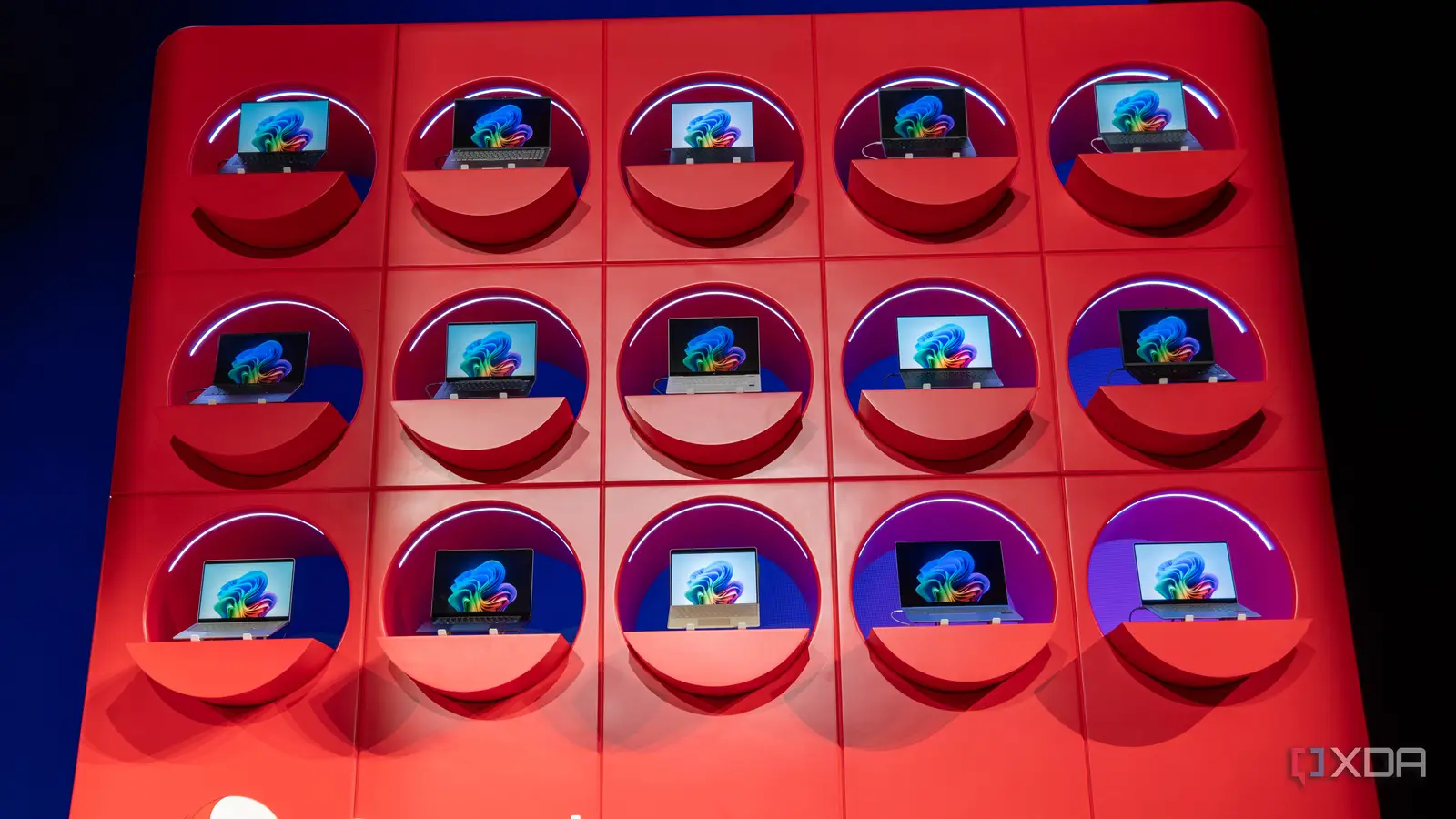
Over the last few decades, Intel’s x86 architecture has ruled the world of computing, powering everything from the most basic laptop to the most powerful data center machines. However, a quiet revolution has been quietly occurring in the background: Arm. Truly starting to take hold in the smartphone era, the Arm architecture is now gaining a key foothold in mainstream computing areas that would have previously been unthinkable. So much so, that it feels as if the writing is on the wall when it comes to the dominance of x86.
There are a number of reasons to think it, and it’s not as unimaginable nowadays to think of when compared to just a few years ago. Apple’s monumental shift to Arm with its M-series of Apple Silicon SoCs certainly kickstarted a trend, and Microsoft’s renewed push for Windows on Arm signifies that Microsoft sees value in it again. And those two industrial changes are merely the tip of the iceberg.
Arm’s industry backing is telling
Practically everyone but Intel is looking at Arm
One of the clearest indicators of Arm’s ascent is who’s making the chips, and how the pool of creators of those chips has only grown in the last decade. Over in the land of x86, there are only two major producers: Intel and AMD. By contrast, the Arm ecosystem boasts a crowd of chip designers. Some of the biggest names in tech are building high-performance Arm-based processors: Apple replaced Intel CPUs in Macs with its in-house M1/M2 chips, Qualcomm is developing its own “X” series of chips for Windows on Arm, and even Amazon has been building its own “Graviton” Arm-based chips for the cloud.
In fact, looking beyond Intel and AMD, virtually every big chipmaker is producing an Arm-based chip. Even Nvidia, who admittedly just recently purchased approximately 5% of Intel and invested $5 billion into the company with a promise of releasing x86 SoCs with RTX chiplets inside, has been building Arm-based Tegra chips for quite a long time. Don’t forget that Nvidia even tried to acquire Arm a few years ago, and has been using Arm-based CPUs for its “Grace” chips aimed at servers.
It’s somewhat telling that even game consoles reflect this divide. While Nintendo’s Switch and Switch 2 are both Arm-based thanks to Nvidia, Nintendo has been using Arm chips since the Game Boy Advance for its handhelds. The DS, DS Lite, and 3DS are all powered by Arm, with some made by other companies and some licensed directly from Arm. Meanwhile, PlayStation and Xbox still run on custom x86 CPUs, but it wasn’t too long ago that consoles and even Apple’s older Macs were using PowerPC instead.
The problem with x86 is that it’s essentially a closed club. In contrast, Arm’s licensing model allows a huge number of companies to come in and design their own chips based on Arm’s ISA. Apple’s move was particularly shocking, but also feels like the canary in the coalmine for x86. There are caveats to this: Apple is a cofounder of Arm and likely has significant power when it comes to negotiating licensing agreements for Arm’s IP, plus it no longer has to pay Intel for its CPUs, but there’s more to it as well.
Back when Apple first announced its intention to migrate from PowerPC to x86 at WWDC 2005, PowerPC was in a bit of an odd position. Aside from Apple, its usage has almost been exclusively limited to early-to-mid 2000s games consoles and, interestingly, the Curiosity and Perseverance Mars rovers. Yet Apple’s shift was as a result of an overall industry trend, as all of the other personal computing platforms were on x86 at that stage.
This time around was different: rather than being behind the times, Apple decided to move first. The switch to Arm has yielded clear benefits, such as power efficiency, thermals, and performance, and at this stage, every major product line in Apple has at least one Arm-based option on the market. Qualcomm then subsequently acquired startup Nuvia for $1.4 billion, which was founded by ex-Apple chip designers, and signals that some of the top talent and chip designers are now in the Arm space. Not x86.
Finally, because of the licensing state of x86, it’s not even a possibility for a company that wants their own silicon to use it. Instead, all efforts go to Arm (or, in some cases, RISC-V), and means that the cutting edge of computing and chip development is happening on Arm.
Software is no longer the problem it once was
Native software and translation layers make more possible
When a developer compiles software, they have to define a “target.” This target is the platform the code is expected to run on, as the code you write is merely an abstraction for what will be compiled as assembly language understood by the architecture your code will be executed on. The CPU instructions that exist for Arm don’t exist for x86, nor vice versa. When Windows on Arm first took off with Windows 10, many of the most popular applications simply wouldn’t run natively, and the “translation” process (which interprets instructions built for x86 and converts them on the fly to Arm instructions) was slow and only supported 32-bit applications.
Microsoft’s earlier attempt, Windows RT, was even worse. Released alongside Windows 8, it was intended for Arm-based devices, and launched with the Microsoft Surface RT. However, it could only run applications from the Microsoft Store, and had no translation capabilities at all. Applications weren’t usually built for Arm, so what was the point?
Apple’s approach went significantly better, and while there’s certainly an element of industry timing given that Microsoft’s earlier attempts were simply too early, Apple also did things differently. Apple’s Rosetta 2 translator was available day one for M1-based Macs, backed by hardware acceleration for translation of x86 instructions to Arm, resulting in an experience that felt completely seamless. Applications were quickly built for Arm, but even those that weren’t often ran without a hitch.
Microsoft’s renewed focus towards Windows on Arm has gone a lot better, improving translation significantly and adding 64-bit support, too. Key apps like the full Microsoft Office suite, Adobe Photoshop and Lightroom, Chrome and Firefox, and many others now have Arm-native releases. Even some gaming platforms are experimenting with it, and the improved emulation capabilities of Windows on Arm can fill in the gaps in a lot of places. There are certainly edge cases, such as some drivers and very old software, but these are often worked around or can be resolved in one way or another.
One of the biggest blockers to Arm’s adoption has been a chicken-and-egg scenario, as developers needed a reason to build and maintain applications for Arm when the users weren’t there, but the users weren’t there largely in part thanks to the lack of software. Even when it comes to games, a primary blocker can be the lack of anti-cheat support in top titles that users want to play. However, the lack of anti-cheat support isn’t an inherent limitation like with Linux; instead, it’s to do with the drastically different hardware given that many anti-cheat solutions will work closer to the hardware in order to scan memory and keep an eye on processes.
All industry roads lead to Arm
Even AMD seems interested
It feels like every major player has at least dabbled with Arm, while some others are all-in on it. Apple’s big move to Arm came as a shock, proving that the architecture was viable as a PC-class architecture. Microsoft, meanwhile, came back to Windows on Arm and polished it up, improving compatibility and even launched its first “Copilot+” computers with Qualcomm’s Arm-based Snapdragon X Elite inside.
When it comes to Qualcomm, they’ve bet big on Windows on Arm. Both Qualcomm and Arm’s CEOs predicted last year that up to 50% of computer shipments could be Arm-based within five years, which is undoubtedly an ambitious claim but shows confidence. On top of that, Microsoft had an exclusivity deal with Qualcomm that reportedly expired in 2024 when it came to Windows on Arm.
Nvidia’s recent partnership with Intel throws a slight spanner in the works in that regard, but it also proves how integrated, efficient SoCs are unavoidable even in the x86 world. Nvidia can still design its own Arm chips as well, and while the future of the rumored N1X chip aimed at Windows on Arm may now hang in the balance, Nvidia has been building AI-focused server-grade machines using its Arm CPUs paired with its GPU technology, and it’s unlikely that’s going to disappear overnight.
However, there’s one other company that’s been silently active in the Arm space that may come as a surprise, and that’s AMD. Despite being the only other mainstream producer of x86 chips, AMD has dabbled with Arm from time to time. Its Opteron A processor, based on Arm Cortex-A57 cores, was released in 2016, and AMD also announced the K12 back in 2014, though officially cancelled it in 2023. Jim Keller, the former lead developer of AMD’s Zen architecture and often partially credited with the restoration of AMD’s chipset business, referred to K12 as “stupidly cancelled.” Furthermore, he stated that the primary difference between the modular Zen architecture and the K12 Arm chipset was the decoder, as most other elements of the chip were the same.
Recent reports have suggested that Arm is back on the menu for AMD, though. While we’re now several generations removed from Keller’s work on the Zen architecture, his assertion that the switch from x86 to Arm would have been quite simple may still hold true today — even if Zen 5 is a significant architectural rework. Plus, MediaTek has publicly been working with Nvidia on both the GB10 Grace Blackwell project and, reportedly in private, the previously mentioned N1X. If Arm is the future (and many companies seem to think that it is), AMD won’t want to be left out of the Windows on Arm race.
There’s been a major shift happening in computing for a long time, and the pace is only speeding up as time goes on. It’s also been more than twenty years in the making. Arm’s usage in gaming handhelds to smartphones, and later to laptops and data centers has legitimized it as a platform where practically everything that isn’t using x86 is using Arm instead. Amazon with Graviton, Tesla cars for infotainment and self-driving, and even fridges from LG are using Arm.
To be clear, I don’t think x86 is going away anytime soon, nor is it ever going to truly disappear. Even today, you’ll find IBM’s decades-old mainframe architecture deep in a server room in some companies. And in this case, x86 has been so huge for so long that it’s unlikely to just… disappear.
Arm has been gaining ground in every category, and consumer desktop trends don’t tend to lag too far behind the rest of the industry. We’ve already seen Intel and AMD’s responses to Arm, with attempts to maximize power efficiency in a way that, to be fair, has definitely worked, but still fails to match the jaw dropping battery life and thermals of the Arm-based Apple Silicon.
Right now, competition is forcing Intel and AMD to step up their game. That’s always a good thing for consumers no matter what, and we might even see more custom design cores in the future. Plus, we haven’t even talked about RISC-V, the open-source instruction-set architecture that can still pose a threat but currently suffers from fragmentation and a lack of adoption. A decade from now, we could be talking about a three-way architecture brawl between RISC-V, Arm, and x86. x86 still has a place when it comes to significant number crunching, but Arm has paved the way as a viable, powerful, and efficient alternative in practically every computing segment imaginable.
As history has shown in tech, once the momentum shifts, it’s nearly impossible to reverse. And the momentum is surely in Arm’s favor right now.



